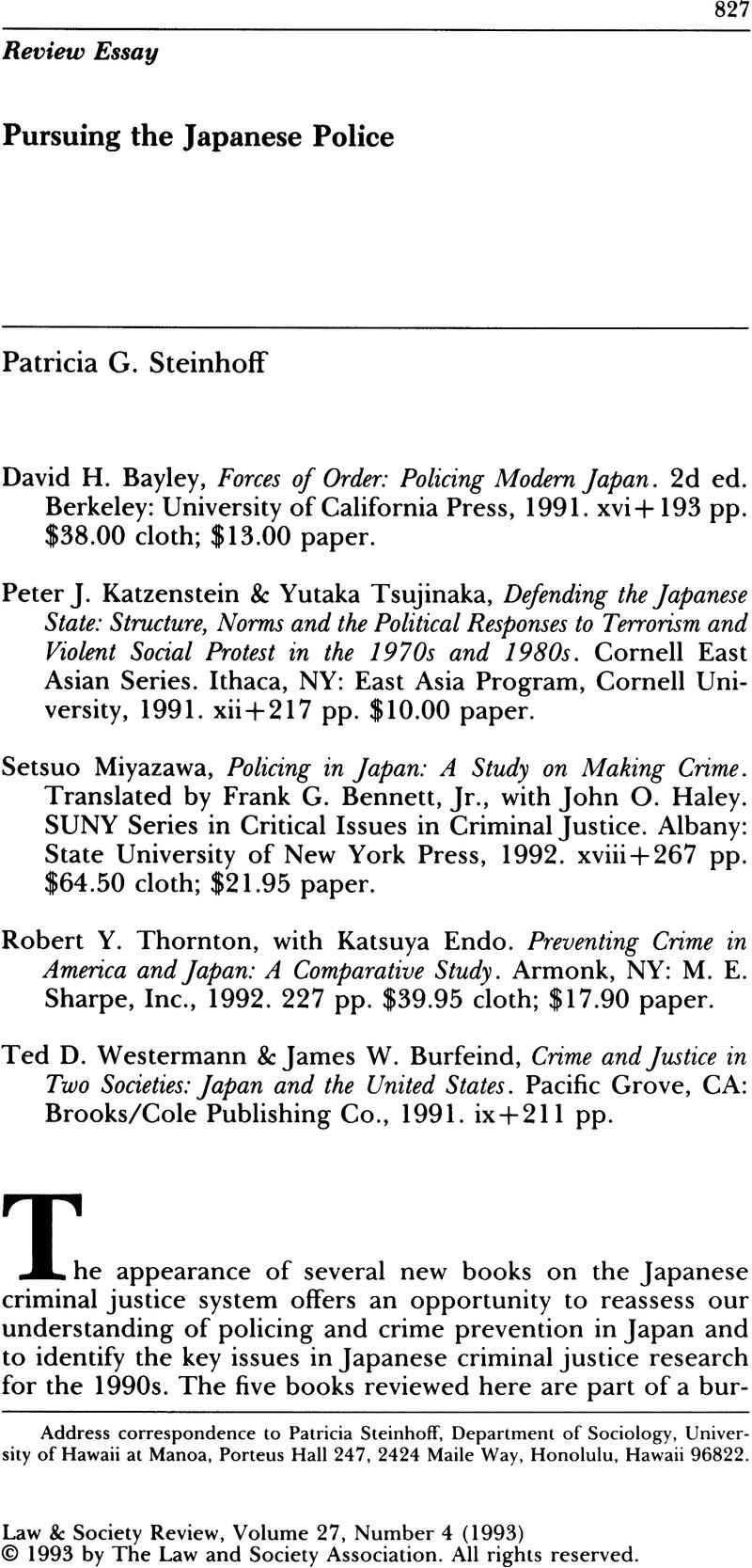Crossref Citations
This article has been cited by the following publications. This list is generated based on data provided by Crossref.
Fiftal Alarid, Leanne
and
Wang, Hsiao‐Ming
1997.
Japanese management and policing in the context of Japanese culture.
Policing: An International Journal of Police Strategies & Management,
Vol. 20,
Issue. 4,
p.
600.
Cao, Liqun
Stack, Steven
and
Sun, Yi
1998.
Public attitudes toward the police.
Journal of Criminal Justice,
Vol. 26,
Issue. 4,
p.
279.
Johnson, David T.
1998.
The Organization of Prosecution and the Possibility of Order.
Law & Society Review,
Vol. 32,
Issue. 2,
p.
247.
Heslop, Richard
2015.
The contribution of David H. Bayley, policing research pioneer.
Police Practice and Research,
Vol. 16,
Issue. 6,
p.
512.
Bui, Laura
and
P. Farrington, David
2019.
Crime in Japan.
p.
23.
Johnson, David T.
2022.
Hostage Justice and Wrongful Convictions in Japan.
Asian Journal of Criminology,
Vol. 17,
Issue. S1,
p.
9.



